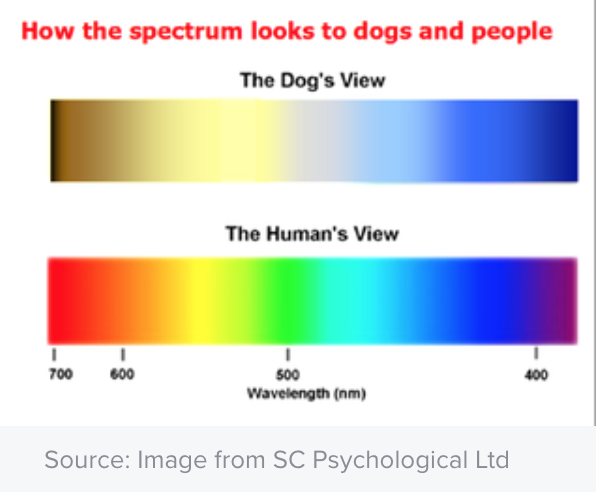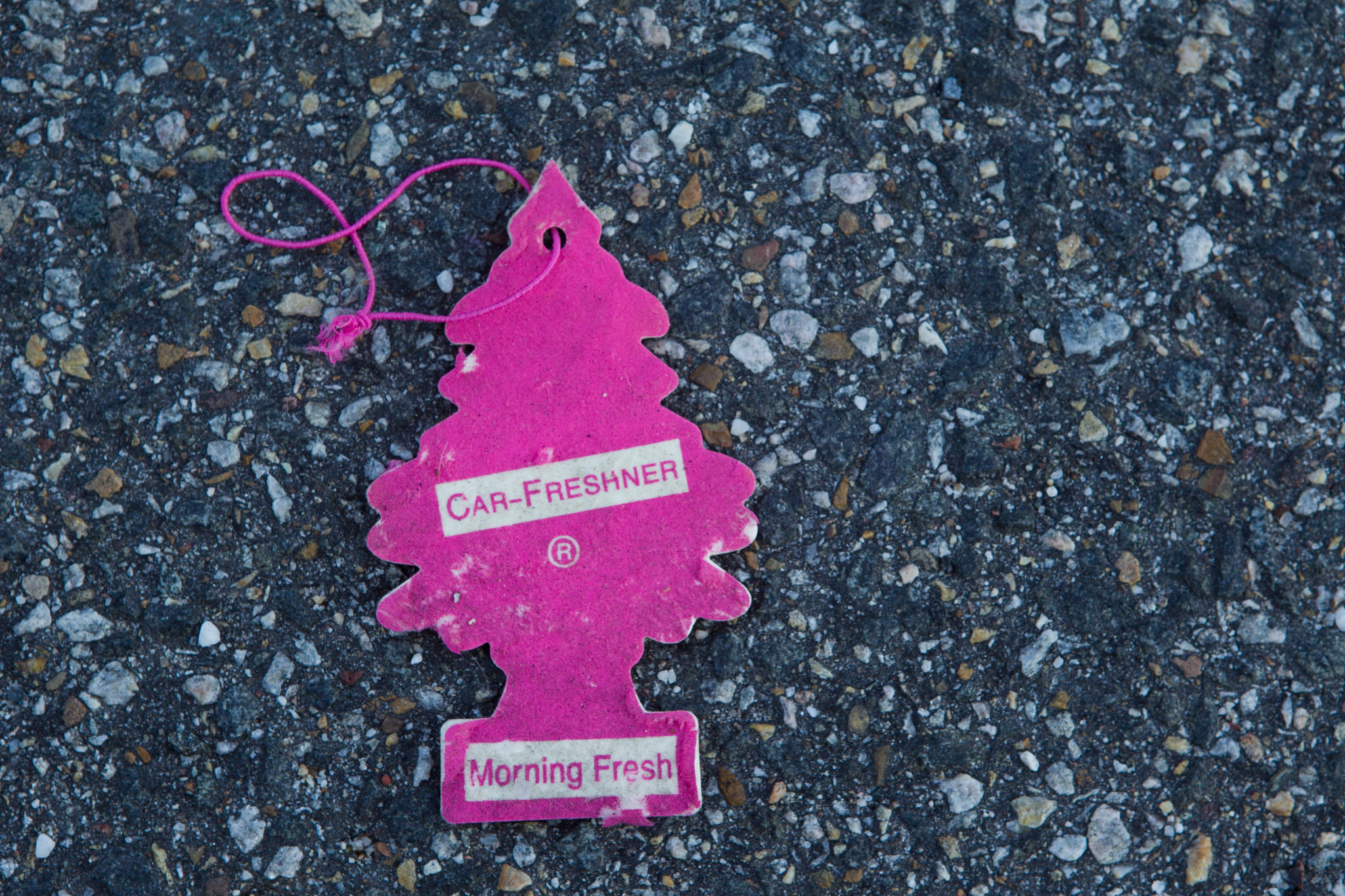| print
link to this post | email a friend How to Help Dogs with Vision Problems30 Aug 2021 By Laurie Edge-Hughes, BScPT, MAnimSt (Animal Physio.), CAFCI CCRT As canine physios, we tend to see a lot of senior dogs. Most often our main focus with these dogs is improving pain and physical function. However, there are other aspects of aging that we are well poised to deal with as well. One such area is helping owners of dogs who are losing their vision to better cope and function by advising on home modifications and/or tools that can help their dogs.
My experience has been that most of the times, these dog owners have had to be creative on their own and/or seek advice from the internet. Traditional veterinary appointments are just too short to delve into a topic such as this in any great depth. Rehab appointments however are longer and we tend to establish deeper connections with our clients, thus putting us in a perfect position to advise on such things as ‘tips and tricks for helping the visually impaired dog.’
So, this blog is a little bit of personal experience, a collection of knowledge gained over the decades, and information that I searched online as well.
Firstly, let’s start with colours. Dogs are essentially colour blind, other than the colours yellow and blue. Dogs will see green, yellow, and orange as YELLOWISH. They will see violet and blue as BLUE. Red is difficult for them to see.1 Knowing this information is useful for several reasons. I recently advised a client on what colour of floor mats she should get for her older dogs. She had noticed that her one dog was afraid to come into the kitchen on the slippery floor, she was wanting to get a non-slip rug for the kitchen as well as her hallway. I told her to aim for a blue or yellow rug, or something with plenty of light and dark contrasts. She purchased exactly as recommended and the dog is now happy to hang out with his owner in the kitchen and/or take himself down the hallway to the bedroom. Win!
Next, let’s discuss depth perception. I have heard many owners over the years tell me that their dogs are afraid of going down stairs. Naturally, we look at physical reasons for this, but in the absence of a physical reason that would make sense for this phenomenon, I ask about the dog’s eyesight. Often the owners will tell me that they are questioning whether their dog might be having visual issues. Now, if that is the trouble, then I recommend adding a strip of masking tape to the edge of the stairs (in a shade that is in contrast to the colour of the stairs). This has made a difference in some dogs, and I’ve found that most owners don’t care about the ‘esthetics’ of having tape on their stairs if it means their dog will be less fearful going down them!
Texture can help a blind dog to orient him/herself. I’ve had an owner put rugs at every entrance point to a room, so that their dog could ‘feel’ where he was as he navigated his house.
Scent! This golden nugget suggestion comes from my business partners who had a blind dog back when we first started our business together. They used essential oils on the corners of their furniture so that he wouldn’t bump into them. Where they lived, fences were not permitted, so in their back yard they had to do something so that their dog could go out and know the ‘confines’ of the yard. In this situation, car air fresheners did the trick by hanging them on the spruce trees around the yard. (Obviously pine scent wouldn’t work, but vanilla did!) How brilliant is that?!
Noise is also a great way to help the blind dog to navigate, especially in a new environment. I don’t know why it started, but it was years ago with a blind basset hound that came to see me. He was just so happy to come to the clinic, he’d start to bay as soon as he heard my voice, but then he’d not move… just stand there and bay. So, I started talking to him, while snapping my fingers, and moving backwards toward my treatment room. He followed. Since then it became a ‘thing’ that I’d do with all of my blind dog patients, and it works!!! They all follow the snapping fingers. I’m not sure if it’s a bit of an echo-location thing… but it works quite consistently for both coming into the clinic and leaving the clinic.
Other aides to consider: A Halo can be purchased and some clever folks might even be able to make one.2 Check amazon and/or google it, there are plenty of options!
I have one client that purchased an actual echo-location device / collar that works for his dog.3 Actually, when looking to find a picture of his device, I actually found a youtube video of this dog as he was learning to use it!!! https://www.youtube.com/watch?v=PDF89WLVC4k
Additional Advice The following is a compilation of various google searches4,5: 1.Talk to your dog frequently 2.Consider putting a radio or TV on in different rooms, so the dog can ‘hear’ which room he/she is moving towards or into. 3.Choose consistency in your walks or house plan. 4.Choose toys that make noise or are scented. 5.Add sound to yourself or the other pets in the house – perhaps different sized (and sounding) bells on the other pets, or on your own shoes can be helpful. 6.Keep your floor clear of clutter. 7.Teach your dog directional commands such as “right”, “left”, “step up”, “step down”, “stop”, and “danger”. 8.Identify the blindness by alerting dog owners to your dog’s blindness by either telling them and/or having your dog wear some form of identification such as a bandana, leash, or collar that says “Blind Dog”.
All in all, as rehab professionals, there is plenty that we can advise owners about in regards to helping their vision impaired pooch. After all, if it involved function, then it fits into the category of rehabilitation!!
References: 1. Coren, Stanley. Can Dogs See Colors? Psychology Today. Posted October 20th, 2008. https://www.psychologytoday.com/us/blog/canine-corner/200810/can-dogs-see-colors Accessed July 24, 2021. 2. Muffin’s Halo. https://muffinshalo.com/muffins-story/ Accessed July 24, 2021. 3. Jordy Canid Inc. https://jordycanid.com/index.html Accessed July 24, 2021. 4. Jamieson, Amy. 18 helpful tips for caring for a blind dog. Posted November 14, 2018. https://www.care.com/c/17-tips-for-living-with-a-blind-dog Accessed July 24, 2021. 5. Allen, Howard. Is it cruel to keep a blind dog? 21 tips for caring for a visually impaired pet. Feb 18, 2021. https://pethelpful.com/dogs/Is-it-Cruel-to-Keep-a-Blind-Dog-Living-With-and-Loving-Your-Visually-Impaired-Pet Accessed July 24, 2021.
|

|




